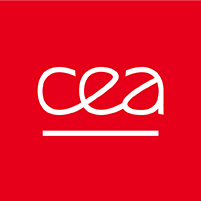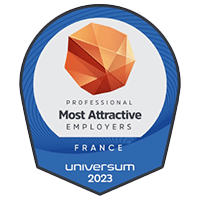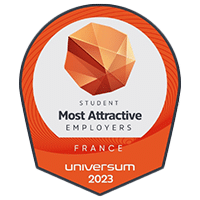- Project in progress
- CEA-SI-2022-002
Big data for better lithium-ion battery characterization

Victor VANPEENE
“At the CEA you have direct access to some very impressive science”
Until now, however, the organization has not really had a system for handling its battery data. Scientists from the CEA’s battery materials, post-mortem battery analysis, and battery modeling and performance monitoring labs decided to utilize the Science Impulse fellowship program to bring fresh expertise to their Big Data challenges.
Victor Vanpeene won the fellowship with his proposal to help the labs get more out of their already massive supply of lithium-ion battery characterization data using the latest Big Data methods. The tools he creates will support the nascent multi-partner Grenoble Battery Hub (GBH).
And the project, still in its early days, is already feeding Vanpeene’s appetite for science.
Automation to get maximum value out of Big Data
The Grenoble Battery Hub (GBH), which was founded by the CEA, European Synchrotron Radiation Facility (ESRF), and Institut Laue-Langevin (ILL) to research sustainable electrical energy storage solutions, will benefit directly from Vanpeene’s Science Impulse project. What makes the GBH unique is its mission of opening access to the large instruments’ cutting-edge neutron and X-ray characterization equipment to help manufacturers develop new generations of batteries. The GBH will look at specific issues—like electrochemical performance, aging, and thermal runaway—from “every angle,” applying numerous characterization techniques. Which is what generates so much data.
Vanpeene will come up with a system to make the data more usable. Specifically, he will leverage automation and AI to remove bottlenecks in the current workflow and make the data easier to collect, warehouse, analyze, and retrieve. The GBH partners are banking on Vanpeene to help speed up the analysis of multimodal battery characterization data.
The technique that interests Vanpeene the most is X-ray tomography, a particularly powerful tool for lithium-ion battery electrode characterization. “There’s a lot of data, and it can be difficult to work with due to bottlenecks in the workflows,” said Vanpeene. Over the past three years alone, a whopping ten terabytes of data has already been produced—a number that is expected to grow by an additional three terabytes per year. “We are currently warehousing more data than we can effectively analyze. We need new Big Data tools to extract value from this huge asset.”
In addition to storing, warehousing, and archiving the data at the CEA in Grenoble, Vanpeene will also have to come up with a database that allows different labs and departments to access the information they need. “To implement the new system, I will have to provide training on how to reconstruct, analyze, and utilize the data,” said Vanpeene.
Marion Chandesris, who heads the modeling lab, is one of Vanpeene’s supervisors. “In terms of what we are trying to do at CEA-Liten (where much of the CEA’s nanomaterials and battery research takes place), Victor has already given us a big push in the right direction,” she said.
Data at the intersection of multiple characterization projects
“The GBH really sparked my curiosity,” said Vanpeene. “It creates an especially stimulating context for the kind of work I do.” He was just coming to the end of a contract at the ESRF (for the European project TEESMAT to develop a multimodal characterization platform for industrial R&D projects) when he heard about Science Impulse.
His PhD dissertation on silicon battery anodes was “100% academic. Now I get to work on issues that are much more closely related to real-world battery use cases and that address manufacturers’ concerns.”
The multimodal characterization projects carried out through the GBH—abuse tests, post-mortems, and advanced electrochemical characterization using techniques such as X-ray photoelectron spectroscopy and X-ray tomography—are complex and multifaceted.
And that’s what Vanpeene particularly appreciates: looking at a problem from different angles to overcome any bias related to a single technique. With multimodal characterization, no stone is left unturned. “I like the feeling of getting to the bottom of a question with the added objectivity using multiple techniques brings. The project really feeds my appetite for science.”
Before Science Impulse, Vanpeene was not very familiar with the CEA. He has been pleasantly surprised by the quantity—and also the quality—of the data produced. “At the CEA you have direct access to some very impressive science.” Cooperation between scientists is also part of the CEA’s culture, which makes it easier to get new projects off the ground.
Vanpeene also appreciates how willing the CEA is to rapidly make the resources he needs for his project available, whether it’s purchasing servers or analyzing images.
His work—at the intersection of diverse characterization projects—will position him to publish articles that will have an impact on the battery community and on his own research. Vanpeene’s ambition is to make his mark and bring lasting value to the team he’ll be working with over the course of his three-year fellowship. He plans to do this by developing effective, functional tools that the CEA will be able to continue to use for a long time to analyze more battery characterization data in less time.
Vanpeene’s journey to Science Impulse Science Impulse
Vanpeene earned an engineering degree (in electrochemistry) from Grenoble INP – Phelma, UGA and was on his way to a career in academic research. A student internship brought him to one of French electric utility EDF’s R&D labs—and introduced him to industrial R&D.
This experience motivated Vanpeene to apply for an international PhD program through INRS (Institut national de la recherche scientifique) in Montreal, Canada and INSA (Institut national des sciences appliquées) in Lyon, France. His dissertation combined the study of battery electrochemistry using infrared spectroscopy (which he had studied in graduate school) with the study of microstructures using X-ray tomography, modeling, and image analysis at INSA’s MATEIS lab.
Among Vanpeene’s mentors are his dissertation supervisors, Éric Maire (INSA) and Lionel Roué (INRS), who were “very stimulating, both in terms of their approaches to science and in their roles as supervisors.” He was also fortunate enough to secure an ample amount of beam time at different synchrotrons in Europe during his PhD, leading to the publication of four articles. So, Vanpeene started his career in science “on very solid footing.” He also knew he wanted to study and improve batteries using powerful characterization equipment.
He returned to Canada as a post-doc with an exclusive focus on just that—battery characterization—a topic that resonates with his personal environmental values and vision of a circular economy. In fact, Vanpeene already has one patent1 to his name, for a technique to recover material from solar panels in powder form so that it can be used to manufacture new batteries.1 traitant de la valorisation des matériaux des panneaux solaires, intégrables (sous forme de poudre) dans les batteries.
After his post-doc, Vanpeene came “home” to Grenoble to work with another one of his mentors, Julie Villanova, whom he had met at ESRF during his PhD. They worked together for the next three years on ESRF’s ID16B beamline (for the EU TEESMAT project).
Call it fate, but Vanpeene would not have heard of Science Impulse had it not been for his three-year contract at ESRF. Today, Vanpeene, a Science Impulse fellow, will be supervising two post-docs he hired to implement AI to for more efficient image processing and analysis.
He appreciates the CEA’s resources and responsiveness. “The CEA also offers a supportive environment and close ties with the large scientific instruments.” Both pluses in Vanpeene’s book. “The CEA checks all my boxes in terms of research,” he said.
When asked about the impact of the project on his future career, Vanpeene said that the experience could result in a change of course. Since coming to the CEA, he learned about something called a joint research unit.
These labs are affiliated with academic institutions, “which means that you still get to ‘do’ science and be on faculty at an institution, even when conducting applied research,” he said.
What advice would you give future Science Impulse candidates?
Vanpeene tells future candidates not to be shy when it comes to talking about the direction they want to take their research. “It can feel intimidating at first, but it is the only way to truly collaborate and step fully into your role as an equal contributor—especially for junior scientists.” But above all, “The resources are there, so why shouldn’t you go for it? You won’t know unless you apply!”
Hélène Champetier-Gusella/Sara Freitas




